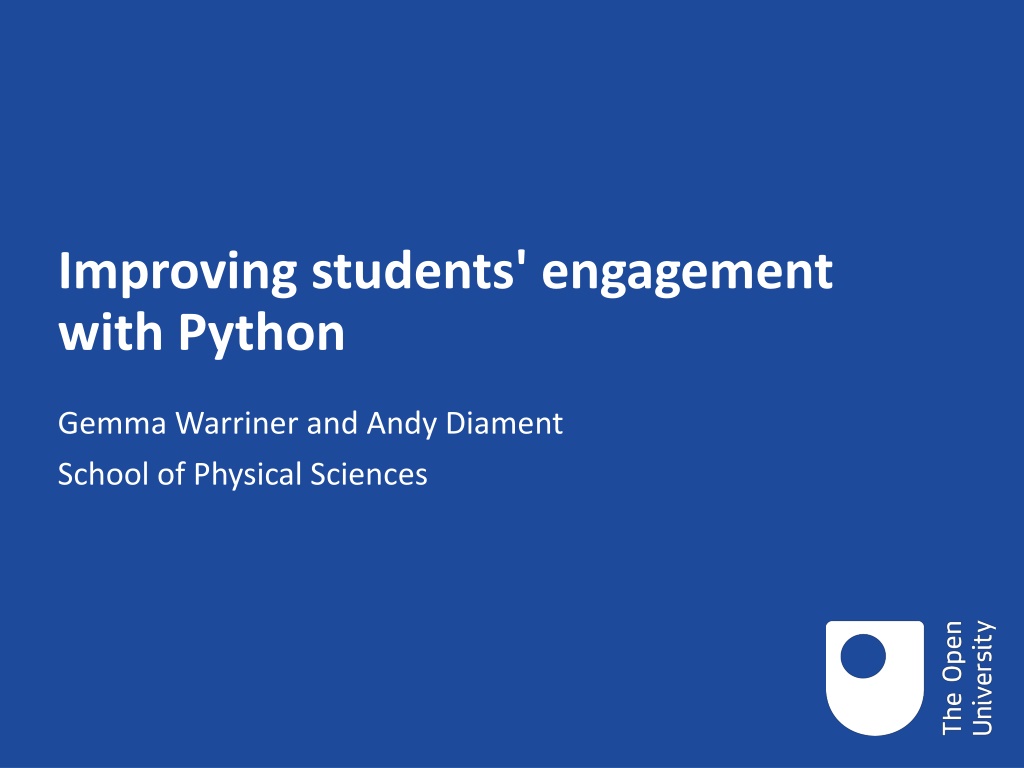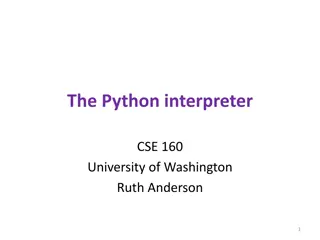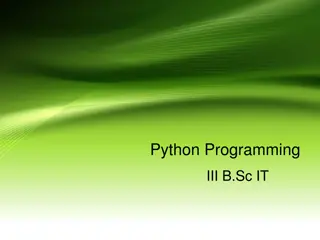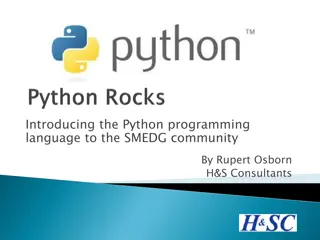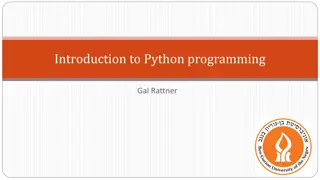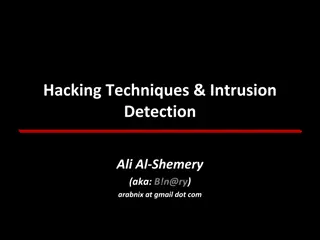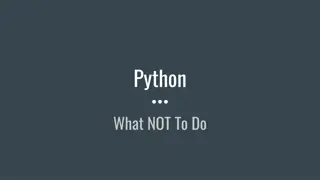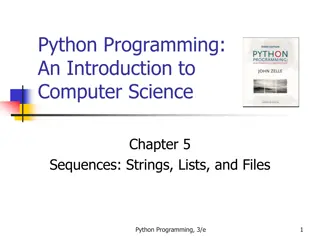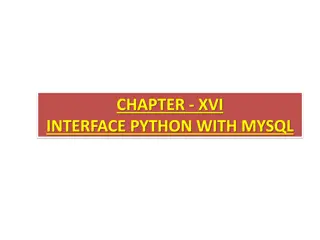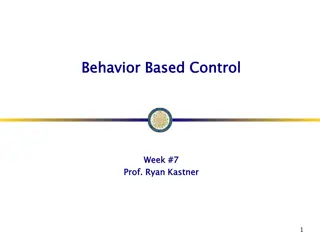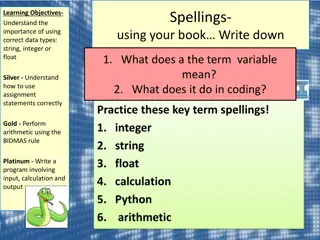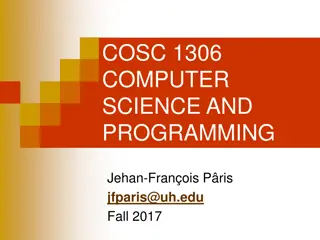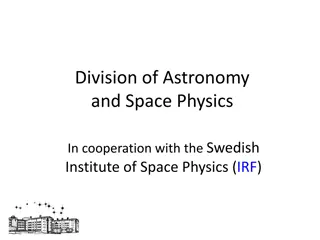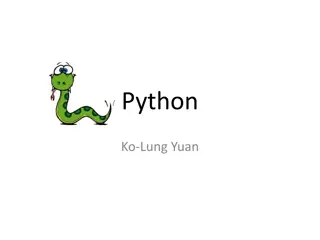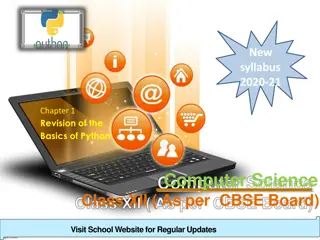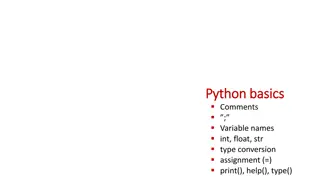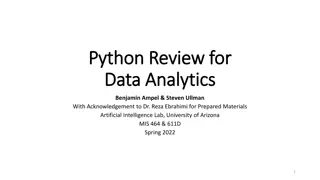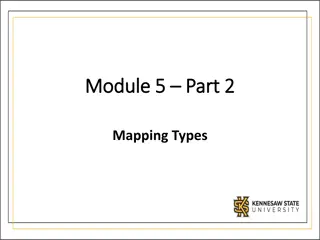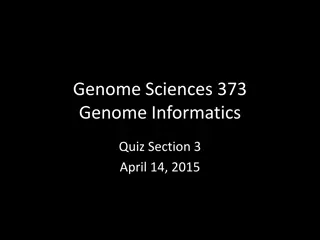Enhancing Student Engagement with Python Programming in Physics and Space Sciences
Utilizing Python programming language is crucial for enhancing employability in Physics and Space Sciences. This study explores strategies to improve students' engagement with Python through questionnaires, assessment of preparation, enjoyment ratings, time spent on study, and resources accessed. The findings aim to enhance the learning experience and skill development in programming for students in these fields.
Download Presentation

Please find below an Image/Link to download the presentation.
The content on the website is provided AS IS for your information and personal use only. It may not be sold, licensed, or shared on other websites without obtaining consent from the author. Download presentation by click this link. If you encounter any issues during the download, it is possible that the publisher has removed the file from their server.
E N D
Presentation Transcript
Improving students' engagement with Python Gemma Warriner and Andy Diament School of Physical Sciences
Context Programming, using the Python programming language, is an essential skill for employability in Physics and Space Sciences. Programming is introduced in SM123 Physics and Space It is delivered in 4 separate weeks, Python 1, Python 2 etc It is used more extensively in SXPS288 Remote Experiments in Physics and Space It will be used in level 3 modules Most SM123 students are new to programming Not all engage successfully with this skill 3
Questionnaires We ran two questionnaires that ran in the first and third weeks of Python study. 55 students took part in the first survey (13%) 87 took part in the second survey (21%) We used the JISC Online Questionnaire Tool Yes/No answers Multiple choice answers Likert scales for confidence, time taken etc Free text responses 4
Questionnaires Broadly we asked them about: How they were finding SM123 as a whole Any preparation they did What resources they used to help them with Python during the module, OU and external. What they felt about Python. For those that felt quite negatively we tried to find out where and why this happened We asked about specific activities within the Python weeks of study 5
Preparation for SM123 We looked at how these 11 students responded to later questions (on next slide), they all reported that they didn t know Python was part of SM123 until they saw it on the website. It is apparent from Q7 that the majority of these students are new to programming 6
SM123 Overall Enjoyment Students rating their enjoyment from 1 (low ) to 5 (high) for different parts of SM123 7
SM123 Time Spent Time spent on study weeks in SM123 in Survey 1 and Survey 2, compared to suggested time on study planner 8
Python Resources Accessed Resources accessed by students whilst studying SM123 9
Python 1 specific activities Students rating their confidence after activities in Python 1 10
Python 2 specific Activities Students rating their confidence after activities in Python 2 11
Confidence after Python weeks Students rating their confidence after Python weeks 1, 2 and 3 12
Summary of findings A summary of our findings: Our surveys confirmed that a lot of students struggle with Python in SM123. It takes them longer, they enjoy it less and many rate themselves as having low confidence after each week. The majority of students are novice programmers and some were unaware that Python was within the module before starting the module. Students are spending a lot of time looking at non OU resources to help them, not always sucvessfully. Certain activities seem to be a stumbling block for students in each Python week. This causes a proportion of the students to give up 13
Outputs Based on the evidence collected, a case was made to update the Python for Physical Sciences website in time for 21J, to better support SM123 students before and during the module. The updated content was written by two ALs addressing the issues that students found particularly difficult as identified by my eSTEeM project. The site now has a new section aimed at SM123 students, with embedded pdfs. The expanded website has been retitled as Programming for Physical Sciences . News about the updates were disseminated to colleagues and links were put on the SM123 website within the Python week information on the Study planner. An email was sent to all prospective 21J students highlighting the Python content. Links were given to the Are You Ready For (AYRF) activity and the updated Programming for Physical Sciences website outlined in section 5.9. 14
Outputs Website: Programming for Physical Sciences (open.ac.uk) https://learn1.open.ac.uk/course/view.php?id=100219 15
Activities for More Practice Scaffolded tasks variously including hints, algorithms, rough flowcharts, solutions 19
Next steps Evaluation of new website Further resources THANK YOU
